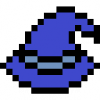Search the Community
Showing results for tags 'tree'.
-
Hi! I'm doing a custom exporter from a source to get nice and structured glTF models as binary-glTF for my use case in BabylonJS. I modified it so that it comes equipped with the tags for MSFT_lod in place. I found I got it working to an extent with 3.1.1 version and I finally figured out that it's just simulating the loading of higher detail levels. So I checked out the latest as well. Trouble I'm seeing now after modifying the lod scheme in the loader for MSFT_lod, so that it would in fact use the addLODLevel function, is that the meshes that are part of the logical tree don't seem to hide away and I'm wondering why. I did also figure out a potential getaway card with the idea, that since I have put the submeshes to contain anything that belongs to a leaf of a node into the same subbranch of the tree, I can pretty much flip the mechanism around and just reconstruct the tree form branches and would-be-boundingboxes to form a makeshift LODding scheme. It's not what I wanted per say, as I would love to control the scheme in the exporter side. Now I am still thinking if even that will work if I cannot even make the branches disappear with addLODLevel(distance, null) calls. Help, please? Cheers!
-
Hello, If I export a scene containing nested instances of the same mesh/object (a tree of objects linked by a parent/child relashionship), and that I load the scene in BabylonJS, mesh positions are altered. Cases that works: - If I make every objects "single user", then it works fine. - If objects are duplicated but not nested, it works too. In the attachment, a Blender test scene with several layers : - the first is a tree made of duplicated copies (data is not shared between instances). - the second is a tree made of duplicated linked instances (same data shared by several object). - the third one is just a linked duplicate of the same object. The tested version of BabylonJS is 2.2. testBabylonExportParenting.zip
- 3 replies
-
- blender exporter
- duplicate linked
-
(and 5 more)
Tagged with:
-
So my game has a large game world, with lots of baddies running around that I need to test for collisions with the player, as well as a tilemap with some solid (collidable) tiles. I understand that using the quadtree technique can help me sort out what is close enough to be considered for collision testing and can save me some collision checks if used right. I have read the docs and the links to the original implementations that the Phaser one is based on, and understand how the concept works, but I can't seem to find any complete explanation of how to get it working in Phaser and any special quirks that Phaser adds. The quadtree example on the Phaser examples page is not helpful. It just throws code at me without explanation. From the scraps of info that I have found from a forum search, I have the following questions: How does the grouping mechanism relate to how quadtrees work? Do the physics systems use a quadtree by default? Do I need to create my own? Are tilemap tiles considered? i.e. I might have some tiles with collides set to true. Will the quadtree factor out distant collision tiles like it would with other physics bodies when checking collisions?



